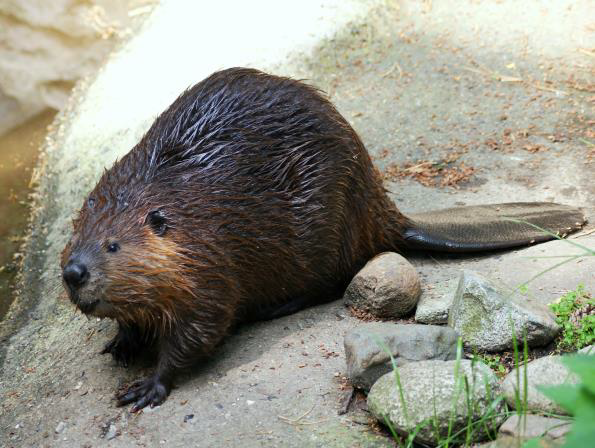
Eurasian beaver © Nasser Halaweh cc by-sa 4.0
I reported in a previous Mountain Views that beavers were now well and truly re-established in Scotland. Recent NatureScot figures estimate that beaver numbers in Scotland are 602 to 1381, with a rough median estimate of 954 beavers across 254 beaver territories, mainly in the Forth and Tay catchments and as far west as Crianlarich. The beaver range is likely to be extending as we speak since there is a lot of evidence of their capability to expand into new territories and cross watersheds. Beavers are valuable ecosystem engineers: creating wetlands, providing a more diverse habitat for other species, controlling flooding and improving water quality, However, some landowners and fisheries interests worry that they can damage flood banks and accelerate erosion of riverbanks.
As I said previously beavers now have legal protection in Scotland and it is an offence to kill or trap the animals or destroy their dams and lodges. NatureScot also grant licences to manage beaver populations where damage is deemed unacceptable. Culling is strongly opposed by environmental NGOs and beaver supporters who point out that translocation to new areas could be a better option,
 |
|
Eurasian beaver © Nasser Halaweh cc by-sa 4.0 |
The big change is that the Scottish Government has decided to actively support the expansion of beaver numbers and have introduced, at the end of 2021, new measures to expand numbers and restore biodiversity. This is a very significant change of policy and the result of an agreement made with the Scottish Green Party. Translocation is considered to reduce or avoid negative impacts and help establish beaver presence in areas of Scotland outside their current range, beyond where natural expansion would be expected to reach in the short term.
Biodiversity Minister Lorna Slater announced the new policy and emphasised that beavers will contribute to restoring Scotlandís natural environment but in some places beavers can produce negative impacts on some species, on agricultural land, forestry and on infrastructure. Translocation is now clearly the preferred option for mitigating these impacts.
The Scottish Wildlife Trust believes that beavers have a vital role to play in tackling the growing crisis facing nature and that there is more than 100,000 hectares of suitable woodland habitat around the country. Much of this habitat is in areas where there is a low risk of conflict with agriculture and other land uses. Interestingly the Trust also considers it vital that land managers are appropriately rewarded for managing habitat for beavers within the new system of land management subsidies. Community consultation will be a very important part of the translocation process and NatureScot is drafting guidance on translocation applications.
The Cairngorms National Park Authority is already developing its own strategy for beaver re-introductions and the Dee Catchment Partnership is considering it too. So it may not be too long before we see these iconic animals in the North East.
Please let the webmaster know if there are problems with viewing these pages or with the links they contain.